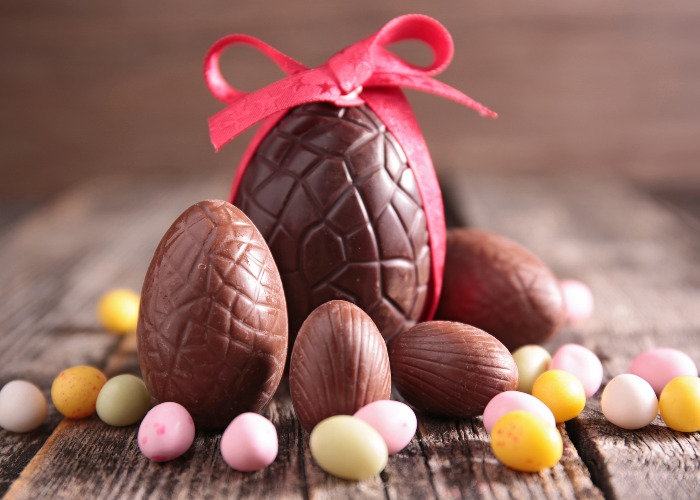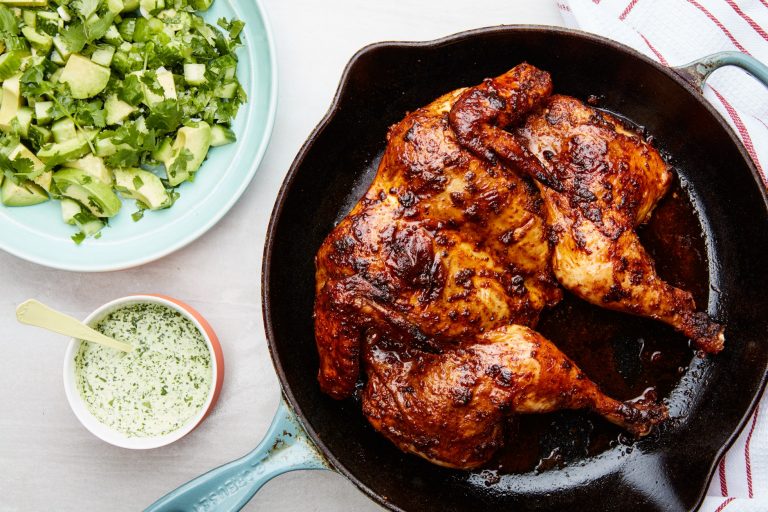Easter is celebrated as a joyous occasion to mark the resurrection of Jesus Christ. It is celebrated as the holiest day for the followers of Christianity. This day is celebrated by having your family & friends over with some delicious Easter food. If you are hosting an Easter dinner for your family and friends, we are here to help you out with the perfect menu for your Easter dinner! Easter is celebrated all around the world, and we have gathered some of the best dishes from around the world that you can prepare for your dinner party.
- Easter Eggs

Ingredients:
- ½ cup butter softened
- 1 teaspoon vanilla extract
- 1 (8 ounces)cream cheese, softened
- 2 ½ pounds confectioners’ sugar
- 1 cup creamy peanut butter (Optional)
- 1 cup flaked coconut (Optional)
- 1 cup unsweetened cocoa powder (Optional)
- 2 cups semisweet chocolate pieces
- 1 tablespoon shortening or vegetable oil (Optional)
Instructions:
- Polish the inside of each mould with a piece of kitchen towel. Then dampen a piece of kitchen towel with a little flavourless oil, sunflower will do, and polish the inside of each mould with the oil
- It is essential to temper the chocolate – this is a method of heating and cooling chocolate for coating or moulding. The heating and cooling separates the cocoa solids and ensures the set chocolate will have a high gloss and smooth finish. To temper the chocolate you will need a cooking thermometer, a heatproof bowl and a saucepan of hot water. Break the chocolate into small, even pieces and melt gently in a bowl over a saucepan of hot, not boiling, water. Place the thermometer into the chocolate and heat until it reaches 43C. Take off the heat and cool to 35C. Now it is ready to use
- Pour spoonfuls of the chocolate into each mould. Swirl around until coated, use the pastry brush if necessary and then remove excess chocolate. Leave to set, flat side down on a surface, like a large tray, covered in greaseproof paper. Fill each mould in the same way. You will have to repeat the process another two or three times to build up a good layer of chocolate in each mould. Wait for about 20 minutes for the chocolate to set in between layers
- Carefully un-mould the egg halves and place on a clean surface, taking care not to handle the chocolate too much as it will start to melt from the heat of your hands.
- To stick the two edges of an egg together, heat a baking sheet and then place the edges of two halves on it for a few seconds, then gently push the edges together.
- To decorate the eggs, sit an egg in a glass or small cup and use it as a stand while you pipe your desired message on the egg. You can wrap your eggs in cellophane wrap and label them to give away or place them in a basket and offer them to guests.
2. Persian Roast Chicken

Ingredients:
- 1 onion, diced
- 2 tablespoons water (warm)
- 1/2 teaspoon saffron threads
- 3 tablespoons extra-virgin olive oil
- 2 lemons
- 2 clementines
- 3 1/2- to 5-pound whole chicken
- Kosher salt or sea salt to taste
- 1/4 to 1/2 teaspoon cinnamon
- 1/4 to 1/2 teaspoon cumin
Instructions:
- Preheat the oven to 450 F. Spread the onion slices in the bottom of a roasting pan
- Place the warm water in a small bowl. Rub the saffron threads between your fingers to crush them and add to the water. Set aside
- Place the olive oil in a small bowl or liquid measuring cup. Juice the lemons and clementines, and add the juices to the oil. Set aside the lemon rinds, and discard the clementine rinds
- Remove any giblets and the neck from the chicken, and pluck any pin feathers. Rinse inside and out with cold water, and pat dry. Place the chicken breast up on top of the onions
- Stuff the cavity with the lemon rinds
- Drizzle the chicken with a little olive oil and massage it over the skin with clean hands. Sprinkle the chicken evenly with a pinch of kosher or sea salt, cinnamon, and cumin, and rub the spices all over the skin
- Add the saffron water to the oil and citrus juice mixture. Whisk to emulsify, and pour evenly over the chicken
- Roast the chicken in the preheated oven for 10 minutes
- Then lower the temperature to 425 F. Continue roasting, basting occasionally, until cooked through, about 50 minutes to 1 hour and 20 minutes, depending on the size of the chicken. When done, the juices will run clear, the leg will wiggle freely
- Remove the chicken from the oven, and allow it to rest for 10 minutes before carving.
3. Traditional Italian Easter Bread

Ingredients:
- 1 -¼ tbsp of dry yeast
- 1/4 cup water
- 3/4 cup sugar
- 1/4 cup milk
- 4 large eggs (at room temperature)
- 1 teaspoon anise seeds
- 1 1/2 tablespoons anise extract
- 1 1/2 teaspoons lemon extract
- 1 tablespoon lemon zest
- 1 1/4 teaspoons salt
- 2 tablespoons vegetable oil
- 6 tablespoons melted butter
- 4 1/2 cups all-purpose flour
Instructions:
- Gather the ingredients and set them aside
- In a large mixing bowl, dissolve the yeast in warm water with a small pinch of the sugar. Let sit for 10 minutes until foamy
- After 10 minutes, whisk in the remaining sugar, milk, eggs, anise seeds, anise extract, lemon extract, lemon zest, salt, oil, and melted butter. Combine well by hand, with a hand mixer, or in a stand mixer
- Once everything is well combined, mix in the flour, one cup at a time, to form a wet, sticky dough.
- Turn onto a lightly floured surface. Knead for about 5 minutes, adding flour as needed to keep the dough from sticking to the surface, to form a smooth and elastic dough
- Place dough in a lightly oiled bowl. Lightly oil the surface of the dough, and cover the bowl with a damp towel. Place in the oven with the light on (but no heat). The dough needs to rise until doubled in size, which will take between 6 to 12 hours. This is a slow-rising dough that can be left overnight without fear of it expanding so much that it runs over the bowl
- When doubled, punch dough down and turn out onto a lightly floured surface; divide into four pieces
- Take one piece and cut it into three strips. Braid and form into a circle. Repeat with the remaining dough
- Place wreath loaves on a silicone mat or parchment-lined baking sheets. Cover very loosely with lightly greased plastic wrap, and let rise for 2 hours
- Heat oven to 350 F. Once loaves have risen, bake for 25 minutes or until golden brown and an instant-read thermometer registers 190 F to 200 F. Remove and cool on wire racks
- Once cooled completely, the loaves can be served immediately, or stored in an airtight container or zip-top bag for up to three days, or freeze for longer storage.
Looking for more such dishes? You can check out traditional easter dinner recipes to enjoy with your family.

